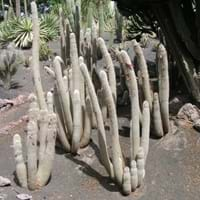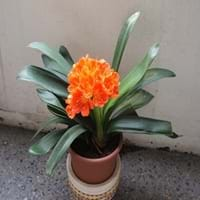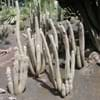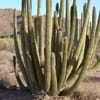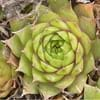Life Span
Perennial
Perennial
Type
Cactus
Bulb or Corm or Tuber
Origin
Central America, South America, Brazil
South Africa
Types
Not Available
Not Available
Habitat
Desert, Temperate Regions
Temperate Regions, Woodlands
USDA Hardiness Zone
12-15
9-11
Sunset Zone
12, 13, 21, 22, 23, 24
21,22
Habit
Upright/Erect
Clump-Forming
Flower Color
Red, Orange, Salmon
Yellow, Red, Orange
Flower Color Modifier
Not Available
Bicolor
Fruit Color
Not Available
Red
Leaf Color in Spring
Not Available
Dark Green
Leaf Color in Summer
Not Available
Light Green
Leaf Color in Fall
Not Available
Several shades of Green
Leaf Color in Winter
Not Available
Light Green
Leaf Shape
Succulent
Long Linear
Plant Season
Spring, Summer, Fall, Winter
Spring, Winter
Sunlight
Full Sun
Partial shade, Full Shade
Growth Rate
Not Available
Slow
Type of Soil
Loam, Sand
Loam, Sand
The pH of Soil
Acidic, Neutral, Alkaline
Acidic, Neutral
Soil Drainage
Well drained
Well drained
Bloom Time
Spring, Summer
Early Spring, Spring, Late Spring, Winter, Late Winter
Tolerances
Drought
Drought
Where to Plant?
Container, Ground, Pot
Container, Ground
How to Plant?
Seedlings, Stem Cutting
Seedlings, Transplanting
Plant Maintenance
Medium
Medium
Watering Requirements
Reduce watering in winter
Water more in summer
In Summer
Lots of watering
Lots of watering
In Spring
Moderate
Moderate
In Winter
Average Water
Average Water
Soil pH
Acidic, Neutral, Alkaline
Acidic, Neutral
Soil Type
Loam, Sand
Loam, Sand
Soil Drainage Capacity
Well drained
Well drained
Sun Exposure
Full Sun
Partial shade, Full Shade
Pruning
No pruning needed, Remove damaged leaves, Remove dead branches, Remove dead leaves
Remove damaged leaves, Remove dead branches, Remove dead leaves
Fertilizers
Fertilize the soil before planting, slow-release fertilizers
fertilize in growing season
Pests and Diseases
Bacterial Stem Rot, fungus, Mealybugs, Spider mites
Red blotch
Plant Tolerance
Drought
Drought
Flower Petal Number
Single
Single
Foliage Texture
Bold
Coarse
Foliage Sheen
Not Available
Glossy
Attracts
Hummingbirds
Insects
Allergy
Not Available
Asthma, breathing problems, Itchiness
Aesthetic Uses
Landscape Designing, Showy Purposes, Wild gardens
Beautification, Landscape Designing, Showy Purposes, Used for decorating walls, fences, gates, hedges, etc.
Beauty Benefits
Not Available
Not Available
Environmental Uses
Air purification
Air purification, Food for insects, Prevent Soil Erosion
Medicinal Uses
No Medicinal Use
No Medicinal Use
Part of Plant Used
Whole plant
Flowers
Other Uses
Florist trade and landscaping, Used as Ornamental plant
Decoration Purposes, Showy Purposes, Used as Ornamental plant
Used As Indoor Plant
No
Yes
Used As Outdoor Plant
Yes
Yes
Garden Design
Container, Houseplant, Rock Garden, Wall
Container, Feature Plant, Foundation, Houseplant, Mixed Border
Botanical Name
Cleistocactus strausii
CLIVIA miniata
Common Name
silver torch or wooly torch
Clivia
In Hindi
Cleistocactus strausii
Clivia
In German
Cleistocactus strausii
Clivia
In French
Cleistocactus strausii
Clivia
In Spanish
Cleistocactus strausii
Clivia
In Greek
cleistocactus strausii
κλίβια
In Portuguese
Cleistocactus strausii
Clivia
In Polish
cleistocastus strausii
Clivia
In Latin
Cleistocactus strausii
Clivia
Phylum
Magnoliophyta
Magnoliophyta
Class
Magnoliopsida
Liliopsida
Order
Caryophyllales
Asparagales
Family
Cactaceae
Liliaceae
Genus
Cleistocactus
Clivia
Clade
Angiosperms, Core eudicots, Eudicots
Angiosperms, Monocots
Tribe
Trichocereeae
Not Available
Subfamily
Cactoideae
Amaryllidoideae
Number of Species
Not Available
Not Available
Properties of Cleistocactus Strausii and Clivia
Wondering what are the properties of Cleistocactus Strausii and Clivia? We provide you with everything About Cleistocactus Strausii and Clivia. Cleistocactus Strausii has thorns and Clivia doesn't have thorns. Also Cleistocactus Strausii does not have fragrant flowers. Cleistocactus Strausii has allergic reactions like Not Available and Clivia has allergic reactions like Not Available. Compare all the properties and characteristics of these two plants. Find out which of these plant can be used as indoor plant. If you are interested to decorate your house and garden, find out aesthetic uses, compare them and select the plant which will beautify your surrounding. Along with beautification, try comparing medicinal and edible uses of Cleistocactus Strausii and Clivia and you can choose the plant having best and most benefits.
Season and Care of Cleistocactus Strausii and Clivia
Season and care of Cleistocactus Strausii and Clivia is important to know. While considering everything about Cleistocactus Strausii and Clivia Care, growing season is an essential factor. Cleistocactus Strausii season is Spring, Summer, Fall and Winter and Clivia season is Spring, Summer, Fall and Winter. The type of soil for Cleistocactus Strausii is Loam, Sand and for Clivia is Loam, Sand while the PH of soil for Cleistocactus Strausii is Acidic, Neutral, Alkaline and for Clivia is Acidic, Neutral.
Cleistocactus Strausii and Clivia Physical Information
Cleistocactus Strausii and Clivia physical information is very important for comparison. Cleistocactus Strausii height is 60.00 cm and width 30.00 cm whereas Clivia height is 30.50 cm and width 25.40 cm. The color specification of Cleistocactus Strausii and Clivia are as follows:
Cleistocactus Strausii flower color: Red, Orange and Salmon
Cleistocactus Strausii leaf color: Not Available
Clivia flower color: Yellow, Red and Orange
- Clivia leaf color: Dark Green
Care of Cleistocactus Strausii and Clivia
Care of Cleistocactus Strausii and Clivia include pruning, fertilizers, watering etc. Cleistocactus Strausii pruning is done No pruning needed, Remove damaged leaves, Remove dead branches and Remove dead leaves and Clivia pruning is done Remove damaged leaves, Remove dead branches and Remove dead leaves. In summer Cleistocactus Strausii needs Lots of watering and in winter, it needs Average Water. Whereas, in summer Clivia needs Lots of watering and in winter, it needs Average Water.
